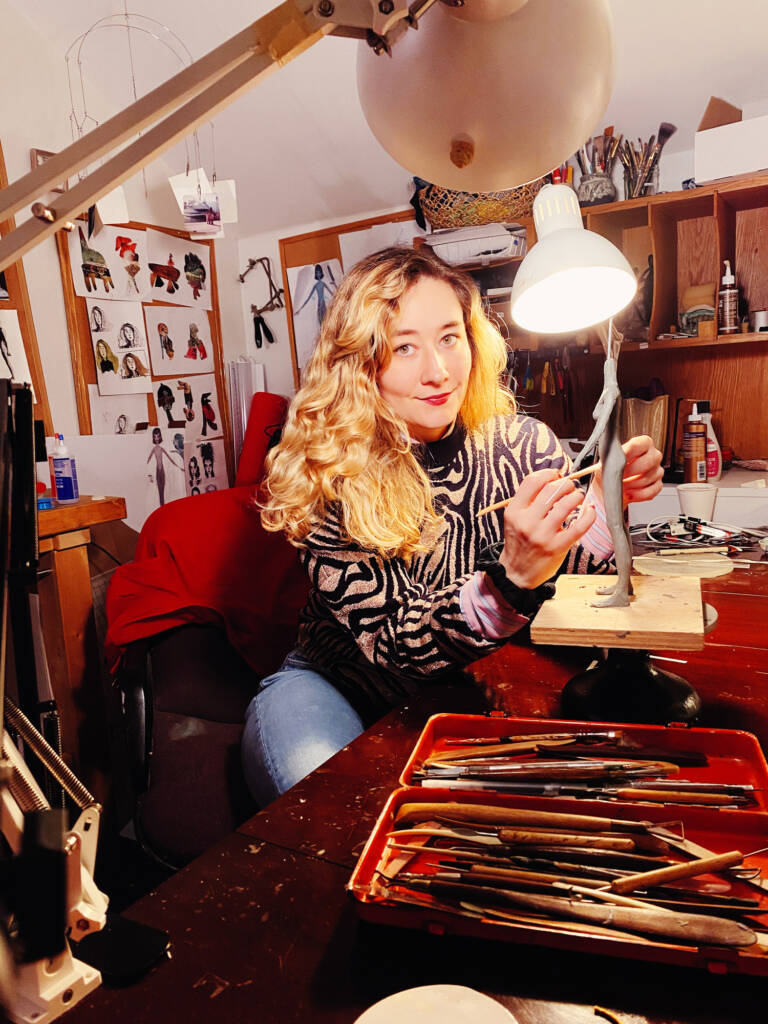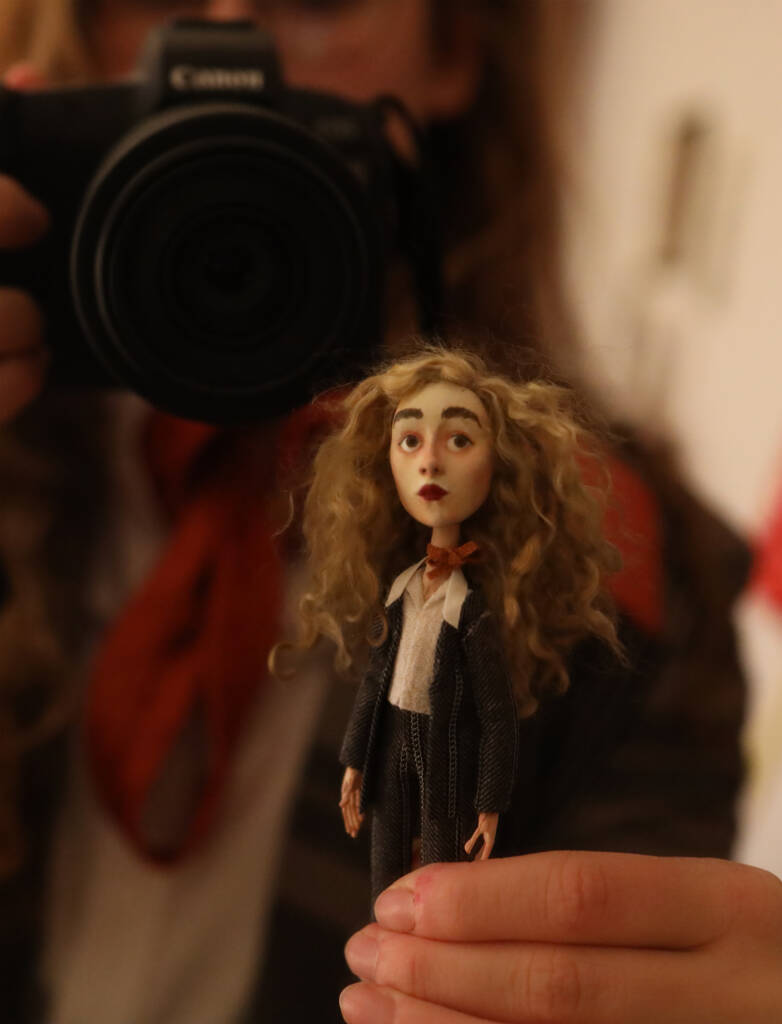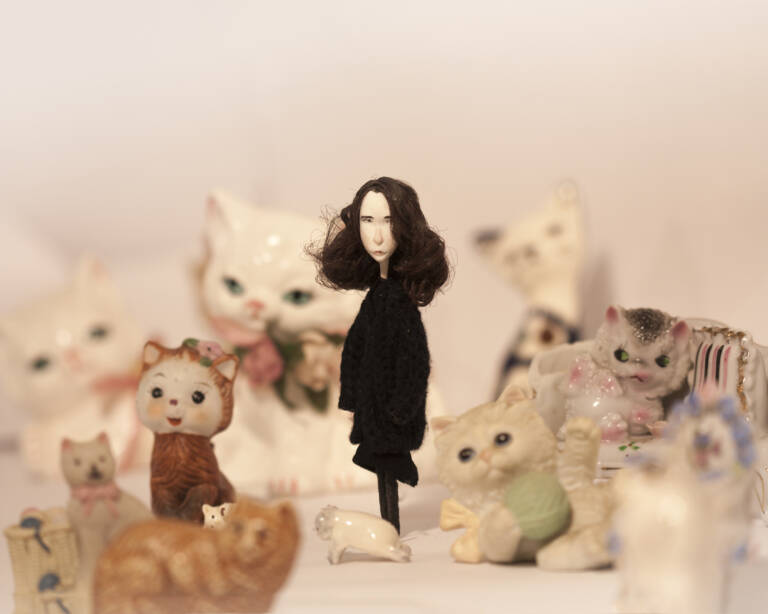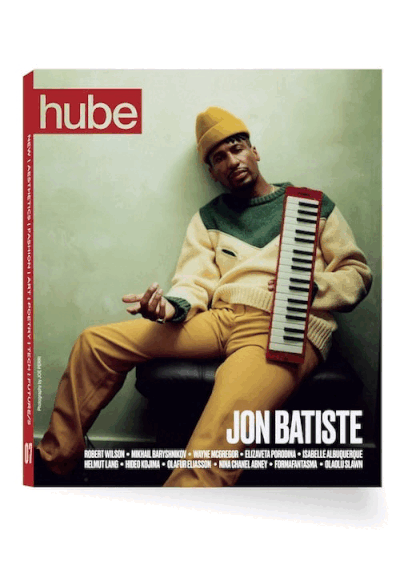

Katy Strutz is a stop-motion artist and sculptor whose character designs blend craftsmanship with storytelling. With a background in figurative sculpture and a passion for world-building, she has worked across animation, editorial illustration, and independent filmmaking. From her portrait of Aubrey Plaza for The New Yorker, to her fan-favourite Stranger Things puppets and imaginative interpretations of Beetlejuice, Strutz has carved a unique space in animation and editorial art. Drawing from historical art forms and contemporary pop culture, her stop-motion works serve as both a storytelling medium and an expressive art form. In this conversation, she shares insights into her creative process, the challenges of balancing artistic vision with industry demands, and the evolving role of practical effects in animation.
hube: Working on projects like Stranger Things must bring unique challenges. What’s your creative process for designing characters in such high-profile productions?
Katy Strutz: My series on Stranger Things was just fan art! I made those puppets shortly after graduating from art school and beginning work as a costume fabricator at Laika. While I loved the work and was learning a lot, I wanted to assert that I could craft entire worlds, not just details. Specifically, I aimed to practice cinematic image-making and experiment with puppetry as a method of holistic character design.
Fanart often gets dismissed as frivolous, but I think it’s a fantastic way to refine your style and showcase what you uniquely bring to something familiar. It’s so important to indulge your creative guilty pleasures – whatever gets your hands moving and keeps your art practice alive, just do it! Creating these puppets no one asked for is what ultimately opened doors for me to sculpt on productions and prepared me for future high-profile projects.
I begin with a strong 2D design as my blueprint for every puppet and then orchestrate how all the tactile elements will flesh out the character.
h: Stop-motion art demands both patience and precision. What drew you to this art form, and how did you get started with puppet-making?
KS: I like to say I’m lucky stop motion exists because it’s the perfect vessel for my lifelong obsessions with dolls, animation, and making things by hand. As a kid, I made Barbie movies, sewed ragdolls, and built miniature apartments out of cereal boxes. My happiest childhood memory is spending an entire summer making a movie with my best friend about our favourite lifeguard at the neighbourhood pool. It was a sprawling, multidisciplinary adventure – editing in iMovie, creating props, planning effects – and I’ve been addicted to giant creative projects ever since, tedium and all.
Interestingly, before college, none of this ever came up in my formal art education, which was always narrowly focused on academic drawing and painting. I discovered the Art of Animation books in high school, which led me to study illustration at RISD in hopes of becoming a Disney concept artist. In my sophomore year, I discovered I had a knack for figurative sculpture, and the work of Kent Melton became the rosetta stone that pointed me in the direction of stop motion. After that, stop motion was always the mountain I was moving towards, and all of the multidisciplinary inclinations I always had clicked right into place.
h: Collaborating with magazines and commercial clients requires balancing your artistic style with client expectations. How do you maintain your creative vision while meeting their needs?
KS: Step one is maintaining a creative practice separate from client work. Having something that’s just yours – no matter how big or small – gives you confidence and clarity about what you bring to the table. This helps you check your ego during collaborations and truly appreciate the opportunities they bring.
Step two is appreciating what collaboration and feedback bring to your craft. Many great directors abide by the ‘one for me, one for the studio’ approach, and ironically, those ‘for the studio’ projects often become their strongest work. Many iconic painters began as commercial illustrators. Constraints and client expectations sharpen your skills and push your creativity.
Working in animation, every little brushstroke is reviewed by a committee, but you learn that translating a 2D design into a dimensional character still leaves a ton of room for interpretation. In contrast, I’m always struck by the relative freedom of editorial work, but the tight deadlines push you to trim the fat and work smart. It’s all part of honing your craft and working toward mastery while contributing to something larger than yourself. Wax on, wax off!

